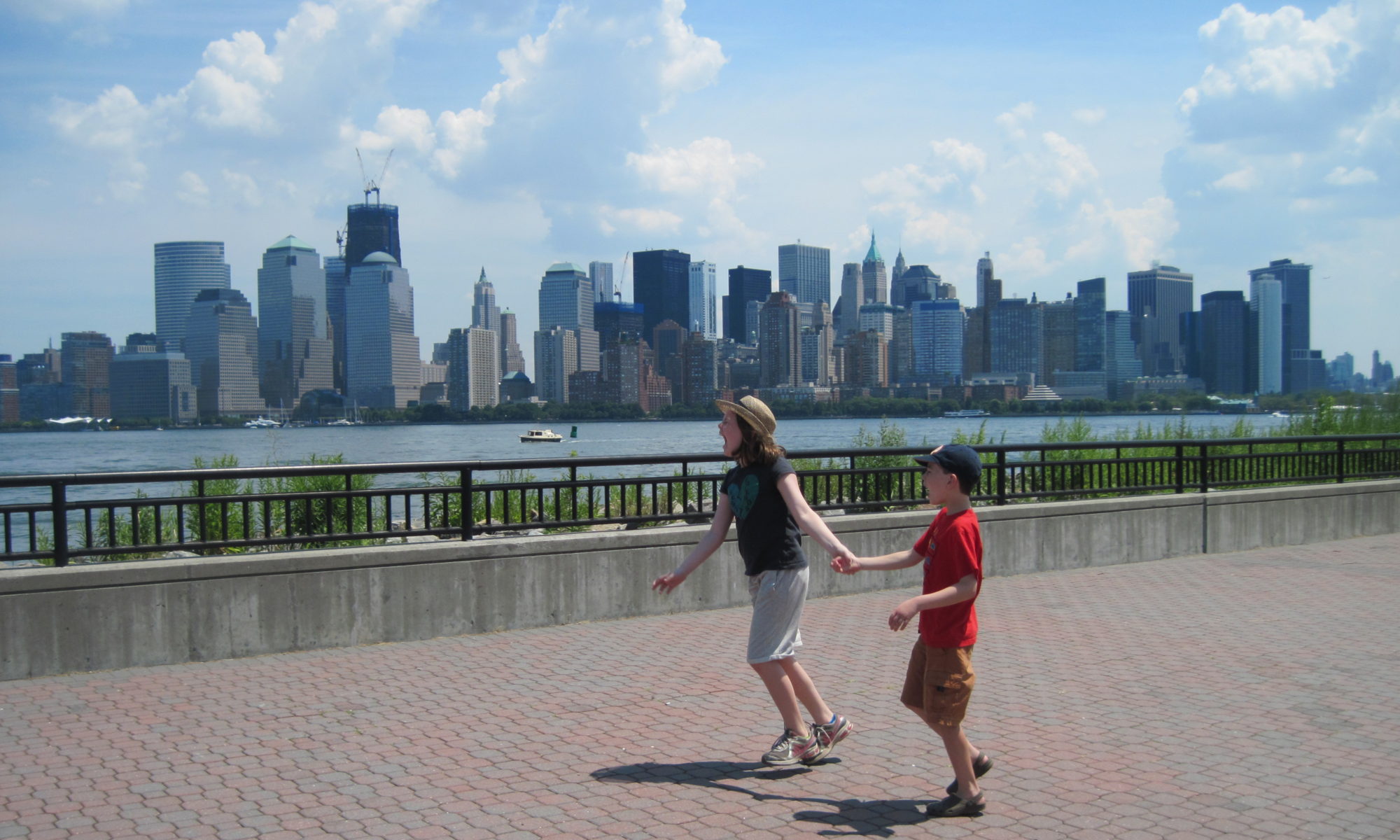The Egyptians had their pyramids and burial chambers filled with goods they thought they’d need in the afterlife. Chinese emperors were buried with a full size army. Fortunately this army was made of terracotta, but 8,000 soldiers strong.
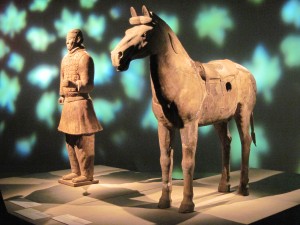
(Tickets and discount ticket information at the bottom)
The army is thought to include 130 chariots and 520 chariot horses and 150 cavalry horses (2 of which are on display at this exhibit), and nonwarriors like acrobats and musicians. The soldiers formed a large army in complete battle formation. They were buried in three pits, which are not fully excavated. You can see details and a lot of pictures of the ongoing Terracotta Warriors archeological excavations here.
While they were buried 210-209 BCE (to protect the emperor during the afterlife), they weren’t discovered until 1974 (aside from some looting not too long after burial), when farmers were digging a well 1.5 km from the burial mound. The emperor was buried in a complex that was designed as a smaller version of his imperial palace (thought to dwarf the pyramids). While the pits containing the soldiers were intentionally buried (after being covered with a wooden ceiling, reed mats and waterproofing clay layers), additional soil accumulated on top.
Like King Tut (back to the Egypt theme), Qin Shi Huang took power early, at the age of 13, fighting the other 6 Chinese provinces for power. He unified China for the first time in history, reconstructing the country’s laws, norms and monetary systems. He built the Great Wall of China.
————————————————
[ad name=”Google Adsense”]
————————————————
Is this exhibit appropriate for kids? It depends. The organizers recommend it for kids in middle school to high school, since they might have studied this period in history.
Exhibit Walk-Through: The exhibit starts with a 4 minute movie that provides a good overview of the time period. The screen rises dramatically, ushering you into the exhibit. It was a great entrance.

The first part of the exhibit focuses on artifacts from that time period (and before), including some food storage vessels, belt hooks, part of a drainage system, and other items. This part was not particularly exciting, and the history is detailed (especially for someone like me who has no background). Some of the items here wer e buried in Qin’s warrior tomb.
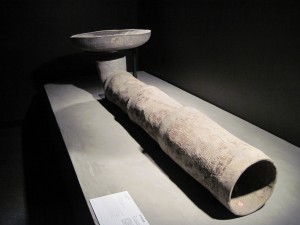
The next part of the exhibit contains 10 original terracotta figures, and one that’s been recreated (the archer). 10 is the most that the Chinese government will allow displayed out of China at one time. The acrobat (which is missing an arm and leg) is making its U.S. debut. There’s also a movie about the discovery. One of the figures on display is a general, only one of 9 generals unearthed.
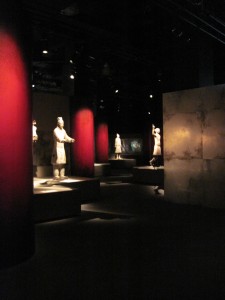
I think the kids would enjoy this part, since the statues are detailed and horses will be a draw. The recreated archer is interesting, partly because it’s painted to look like it would have looked when it was buried (the originals have lost their paint). There’s a short archery video showing what it would have been like to have the thousands of Chinese soldiers shoot arrows in sync. Imagine the Beijing Olympic game opener, and you have the general idea.

The exhibit then moves on to the next few emperors, and their burial armies. These are smaller and less dramatic, but no less interesting. The kids would enjoy seeing the farm animals (clay) buried.
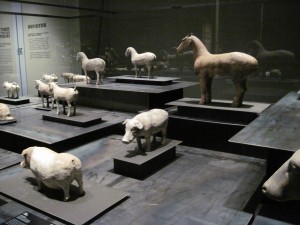
Adults will get a kick out of the “sex toy” objects.

The Figures: they were created in parts (heads, legs, arms and torsos separately). It’s thought that 8 face molds were used, but then individualized with clay. Like the drainage pipes shown above, the body could be assembled in a line. You’ll see differences in footwear, hair style and height (taller ones held higher power). Though the weapons aren’t present now, they once held them, and they were painted in brighter colors.
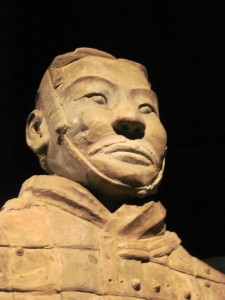
Lessons for Kids:
-You can talk with the kids about how history is remembered from the survivors and the historic writings. The exhibit focuses on the writings of historian Sima Quin and whether his narrative is reliable and accurate. As the exhibit says, only archeology can verify the accuracy.
-Maps throughout the exhibit show the changes of the Chinese land over time.
-You can look at the artifacts to see whether they were used by nobility or regular citizens, and what difference that makes in the material and quality.
-You can talk about the styles of war, and the reasons for war. Emperor Qin used military strategy of allying with distant states to attack neighbors and gain power. The Art of War by Sun Tzu was written during this time period.
-The spoils go to the victors. The other states had to conform to Qin’s state after he gained power. This meant converting their currency to his and changing their culture as well.
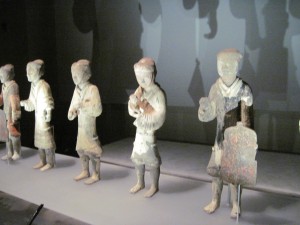
The Gift Shop: There are some good books and other items like coin replicas in the gift shop (including plenty of pandas and model terracotta figures). You’ll want to leave some time to look through there. There’s also a Cake Boss stand if you want a sweet treat.
Good books for the kids: Terra-Cotta Soldiers: Army of Stone, Escape of the Terra-Cotta Soldiers: An Ethan Sparks Adventure, and Hidden Army: Clay Soldiers of Ancient China.
Logistics:
-You can’t bring food or drink in. They do have a free bag check.
-There aren’t many chairs in the exhibit.
-I spent 75 minutes in the exhibit, and that was without any crowd and with me reading many of the signs. I’m guessing that with kids, you’ll be in/out of there in less than an hour.
Terracotta Warrior Tickets and Discount Tickets:
The exhibit runs April 27, 2012 through the end of summer.
Ticket prices are $19.50 (children ages 4-12), $25 (adult) and $22.50 (seniors). Buy them at the door or by phone (866) 987-9692 or online .
–Get discounts for a group (15 or more with advanced reservation).
–Use your American Express card and get a free audio tour. Higher level cardholders can get reserved tickets that were set aside for peak times (Friday through Sunday).
–Check back here for additional discounts. I’ll list them as they appear.
